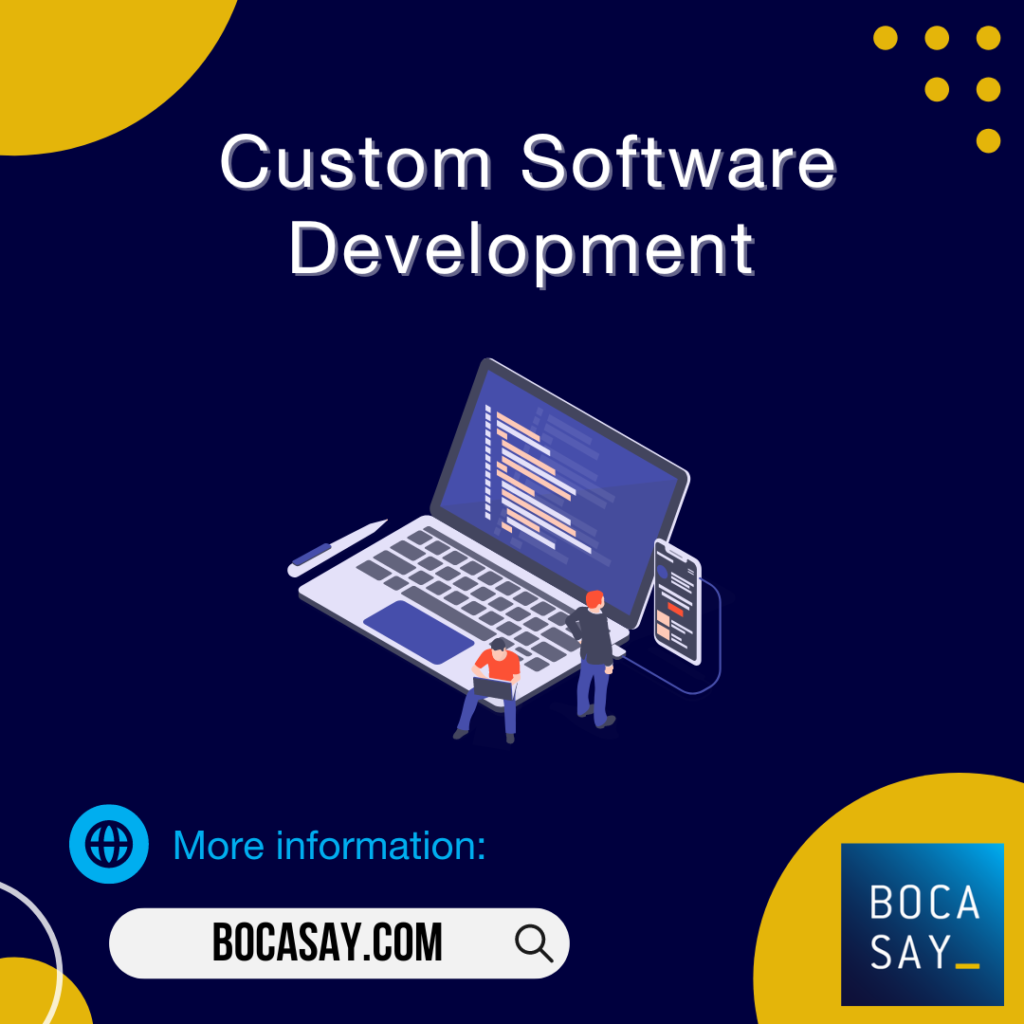Why Custom Software Development is the Best Solution for Your Organization Needs
Personalized Software Application Development: Tailoring Technology to Meet Your Distinct Requirements
In today's quickly evolving technological landscape, personalized software advancement stands as a critical strategy for businesses seeking to improve their operations with precision-crafted services. As enterprises aim for seamless integration and scalability, the question arises: just how does one guarantee that customized software not only meets existing demands yet likewise prepares for future challenges?
Recognizing Personalized Software Application
Personalized software application development entails crafting customized software application services to satisfy the particular needs of a company or organization, distinguishing it from off-the-shelf software application. While off-the-shelf solutions offer generic performances created for mass charm, personalized software application is meticulously developed to fit the unique procedures, process, and tactical objectives of a certain entity. The development of personalized software is a complex procedure that requires a deep understanding of the customer's demands and the environment in which the software application will run.
The procedure begins with a comprehensive analysis of the customer's company procedures to determine specific requirements and difficulties that the software program must attend to. This is adhered to by the layout and growth stages, where software engineers and developers function very closely with stakeholders to ensure alignment with business objectives. Unlike conventional software plans, custom software is adaptable, permitting alterations and scalability as the organization progresses.
Furthermore, customized software application is developed with the organization's existing systems in mind, ensuring assimilation and compatibility throughout platforms. This causes improved performance and streamlined procedures. By straightening modern technology with company procedures, custom-made software equips companies to accomplish their objectives with precision and performance, inevitably supplying a competitive side in their respective industries.
Advantages of Tailored Solutions

Furthermore, customized software program gives scalability, a crucial benefit for expanding organizations. As a business's demands advance, custom options can be changed and increased to accommodate brand-new performances without interrupting existing procedures. This versatility guarantees long-lasting practicality and sustains future growth.
Safety and security is another significant benefit. Custom-made software program can be made with durable security methods tailored to the details susceptabilities of the organization, decreasing the threat of cyber hazards. Unlike common software, which may be targeted by extensive strikes, custom-made solutions offer a less foreseeable target for cybercriminals.
Key Advancement Processes
Comprehending the advantages of tailored software options lays the foundation for discovering the essential growth processes that make such customization feasible. Central to these processes are demands gathering, style, growth, testing, and implementation. Each action is diligently crafted to make sure that the last item aligns effortlessly with the customer's unique objectives.
The procedure starts with complete needs gathering, where programmers involve in detailed discussions with stakeholders to understand their specific demands and constraints. This stage is crucial for determining the software program's scope and setting clear expectations. Following this, the layout stage translates these needs into a critical blueprint, detailing the software's design, user interface, and capabilities.
Growth is the core of the process, where skilled programmers write code based upon the well-known layout. This stage is repetitive, enabling continuous refinement and combination of comments. anchor Evaluating complies with, serving as a quality assurance step to identify and remedy any type of flaws or discrepancies.
Collaboration With Developers
Efficient partnership with designers is important to the success of custom-made software jobs. This collaboration guarantees that the end product accurately shows the client's vision and fulfills specific organization purposes. Open interaction is the cornerstone of this cooperation. It entails normal meetings, clear discussions, and using devices that promote info exchange, such as project management software program and interaction platforms - custom software development. By establishing clear lines of interaction, both parties can resolve difficulties as they emerge and adjust the job to transforming needs.
Comprehending the programmer's workflow is additionally crucial. Customers that acquaint themselves with the growth procedure can give even more pertinent feedback and set reasonable assumptions relating to timelines and deliverables. This good understanding cultivates a more harmonious connection, where programmers feel supported and clients really feel educated.
Additionally, entailing designers early in the decision-making procedure can substantially boost the job's end result. Developers bring technological proficiency great site that can affect tactical choices, making certain that recommended options are not only feasible but likewise reliable. By valuing their input, customers can harness their creative thinking and technological abilities to accomplish cutting-edge outcomes.
Future-Proofing Your Software Application
In the ever-evolving landscape of modern technology, guaranteeing your custom-made software remains appropriate and practical with time is vital (custom software development). Future-proofing your software entails tactical preparation and implementation of adaptable remedies that accommodate technical developments and altering service needs. The secret is to prepare for possible changes and incorporate versatility right into your software design from the beginning
To achieve this, prioritize scalable solutions that allow for seamless combination of brand-new functions or modules as your business grows. Using modular style patterns can help with updates and decrease disturbances. Furthermore, embracing open requirements and interoperability guarantees that your software program can communicate effectively with other systems, preventing supplier lock-in and boosting adaptability.
Regularly updating your modern technology stack is likewise crucial. This entails staying informed about arising technologies and industry trends, enabling your software program to leverage the current technologies. Additionally, proactive upkeep and extensive screening procedures are vital to identify and address vulnerabilities, guaranteeing continual security and performance.

Conclusion
Customized software application advancement uses a strategic benefit by giving remedies uniquely tailored to an organization's particular requirements, enhancing operational performance, scalability, and safety. Via precise demands collecting, collaborative design, and repetitive advancement, custom software application makes certain seamless assimilation page with existing systems and adaptability to future adjustments. This approach not just addresses current obstacles yet likewise positions services for lasting success by advancing along with organizational growth, therefore establishing a robust structure for continual technical innovation and one-upmanship.